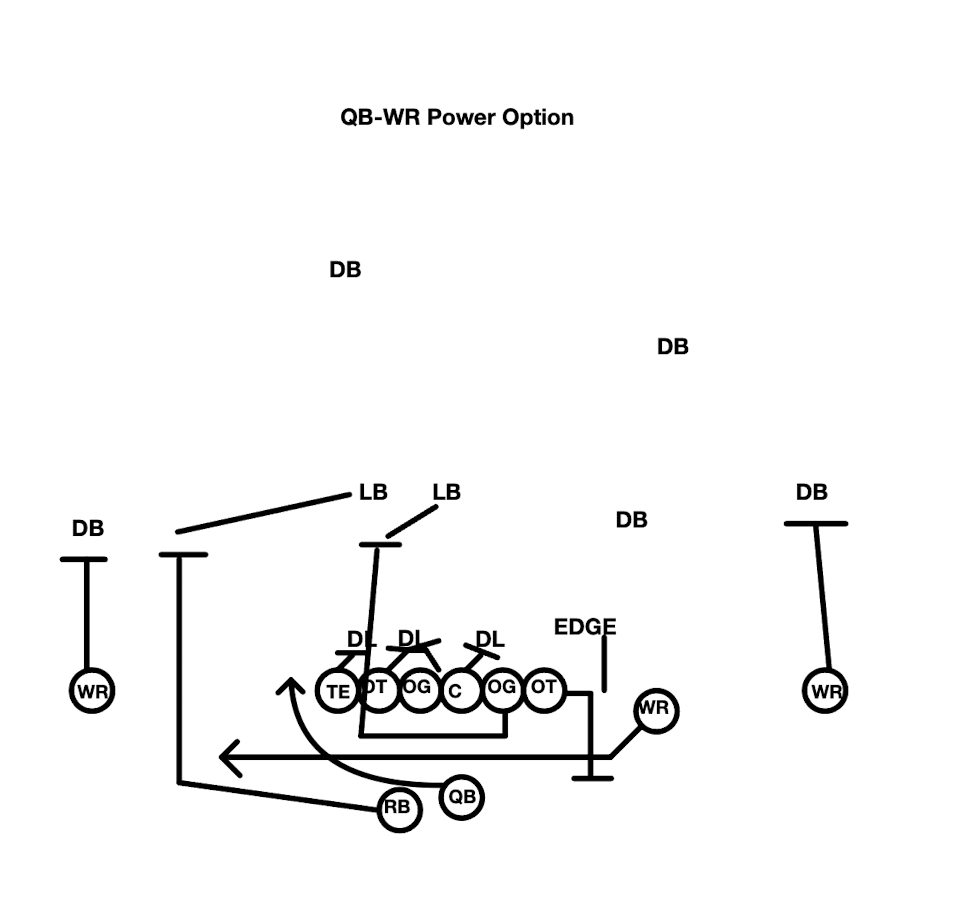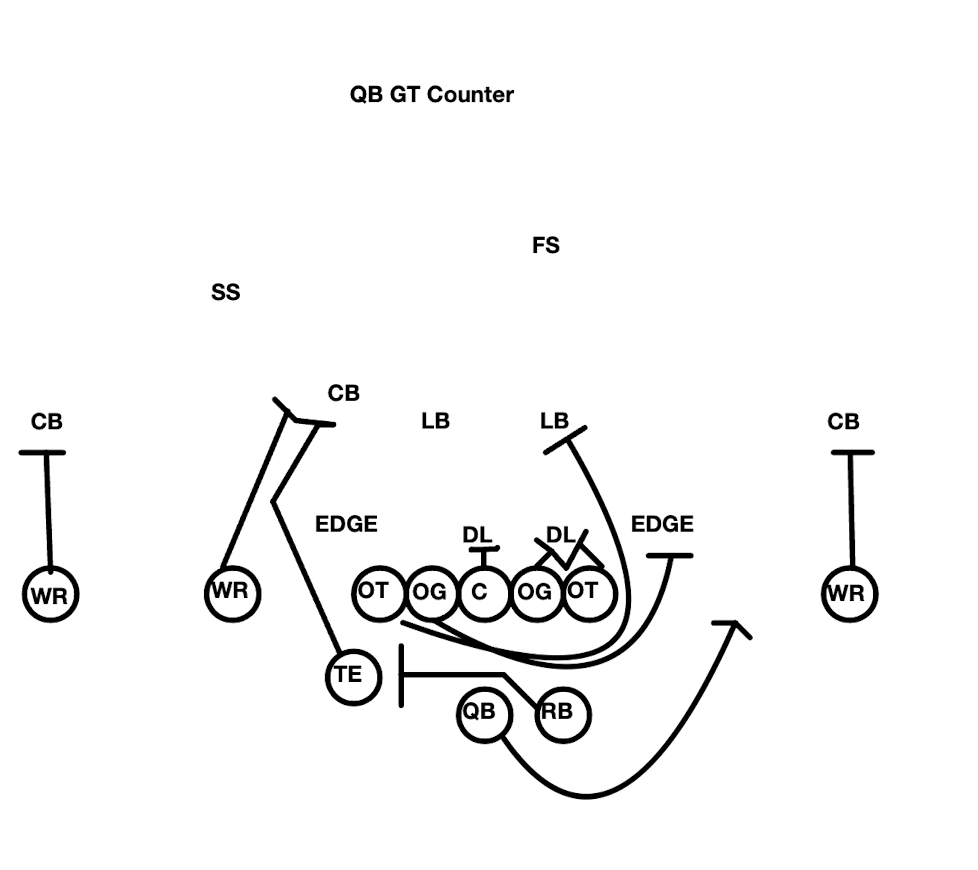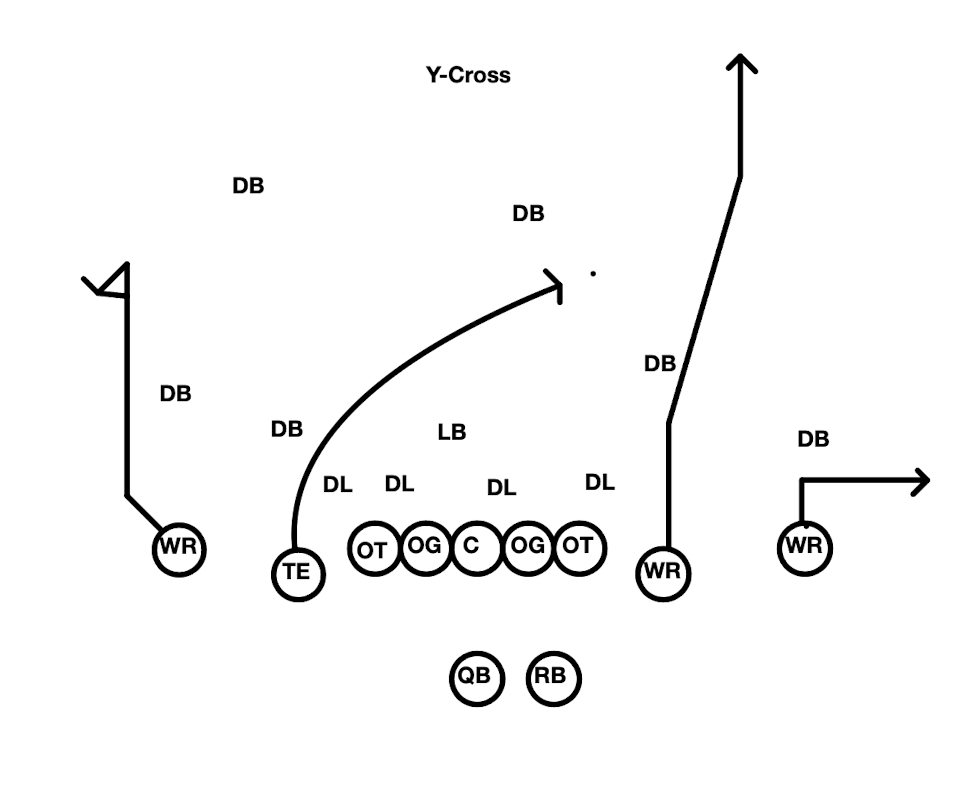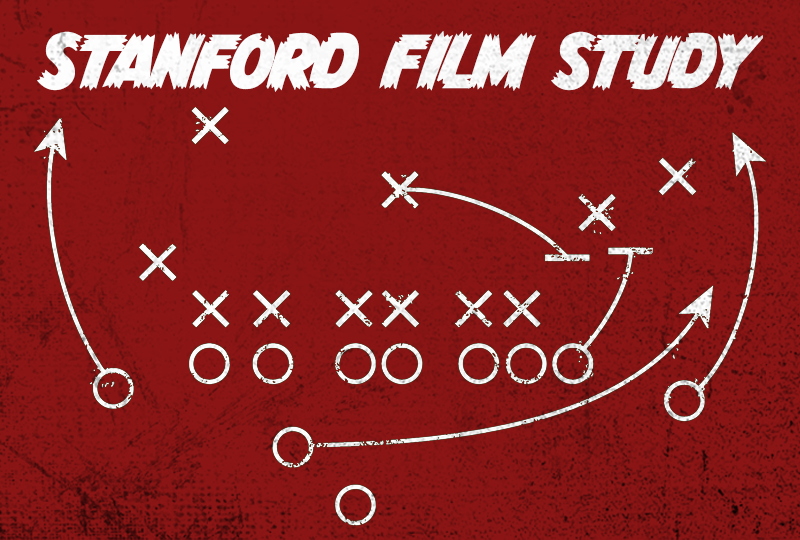This installation of Stanford Film Study will take a brief look at new Stanford head coach Troy Taylor’s offense. While the boundaries between offenses in college football have become more permeable over the past 15 years, coaches still have their own tendencies and philosophies they hold dear. Taylor is no different, and he will bring a distinct offensive identity to Palo Alto, Calif.
The days of heavy personnel groups with fullbacks and extra offensive lineman are likely coming to a close for the Cardinal. With Taylor at the helm, Stanford will incorporate more air raid and spread concepts into their playbook. Accompanying these changes will be a more varied running game, with zone, gap, read-option and pin-and-pull schemes all figuring prominently. Stanford fans may also see increased usage in the quarterback running game, along with more two-running back sets.
The rest of this article will take a look at some of the concepts that Taylor used the most while coaching the Sacramento State Hornets this past season. We can expect the Cardinal to utilize some of these concepts during Taylor’s stint on The Farm.
QB-WR Power Option
In his time at Sacramento State, Taylor utilized the quarterback power option a ton in order to stretch the defense horizontally on the run. The concept consists of the offensive line using the power offensive blocking scheme, which consists of down blocks across the line with a pulling guard. But instead of kicking out the defensive end with a tight end or offensive tackle, the quarterback will instead read where the end goes. If the end stays outside, the quarterback will keep the ball and run in-between the end and offensive line. If the end decides to play the quarterback and creeps inside, the quarterback will hand it off to the receiver, who bounces it outside.

Here is an example of Taylor running the play against Incarnate Word in the FCS playoffs this season.
Mesh Sit
Mesh is one of the most common plays used in Air Raid passing offenses. Mesh involves two receivers running underneath drag routes in opposite directions. The receivers are trying to create a natural rub on their defenders so that they can gain outside leverage and create an easy pitch-and-catch. In man coverage, receivers will keep running their shallow drag routes while in zone coverage, they will sit in the open space. Sometimes teams will pair this with a sit route in order to create a triangular stress on the defense. If the defense tries to flood the middle of the field with defenders, coaches will also pair the mesh and sit routes with a wheel route by the running back out of the backfield.

Here, Sacramento State runs the mesh sit against Incarnate Word in the red zone. The wheel route is wide open for the touchdown, but the running back drops the ball and the Hornets eventually have to settle for just three points.
GT Counter
GT Counter is similar to the counter play discussed in an earlier installation of Stanford Film Study, but instead of just a guard pulling, there is a guard and tackle pulling around to take on the linebackers on the playside. In order to keep back side defensive ends from over-pursuing the play, Taylor will often employ a flip tag, which means that either the quarterback or running back will run opposite the play side toward the defensive end. This can be run as option play to read the back side edge player as well.

Here is an example of the Hornets running GT Counter option with a flip tag.
Y-Cross
Y-Cross was featured on an earlier installation of Stanford Film Study, but you can expect to see it featured more in Stanford’s offense under Troy Taylor. Y-Cross tries to get an inside slot receiver or tight end in space, often against slower linebackers. Meanwhile, a receiver on the same side as the Y-receiver will run a post, dig or go-route to try and take away the free safety over the top. The other side of the formation will try to run a high-low concept of some kind.

During this play, Sacramento State tight end Marshel Martin (16) runs the crossing route, and breaks in toward the middle where there’s a lot of green ahead. The defender holds Martin to prevent him from getting to the spot, and the pass interference allows the Hornets to move up 15 yards.
